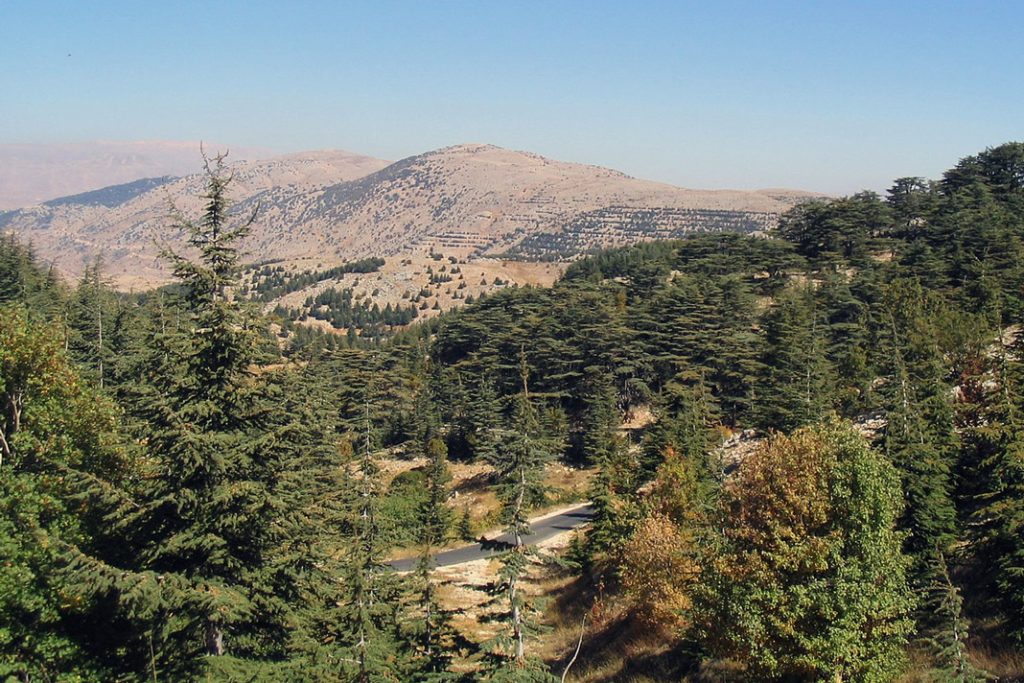
Lebanon is transforming forest restoration by combining biodiversity data and DNA metabarcoding. This innovative approach integrates animals, plants, and soil life to create resilient, self-sustaining ecosystems.
In the face of accelerating biodiversity loss and climate change, ecological restoration has become more than just replanting trees; it’s about reviving the complex web of life that keeps ecosystems resilient. In the past, in many regions in Lebanon, restoration efforts relied heavily on monocultures, the planting of a single tree species across large areas. For instance, reforestation has often centered on iconic species like cedars and pines. While visually striking and culturally significant, such monocultures fall short in restoring the ecological integrity of forests.
Monocultures may initially seem productive, but they come at a cost: they fail to support diverse animal communities, offer limited ecosystem services, and are more vulnerable to pests, disease, and environmental stresses. A resilient ecosystem requires diversity, not just in plants, but in the animals and microorganisms that interact with them.
Rethinking restoration: The role of animals in ecosystem recovery
To build truly functional forests, we must reimagine restoration as a biological network, where plants and animals play complementary and inseparable roles. Seed dispersers, pollinators, and predators, especially birds and mammals, are essential players in this network, ensuring plant regeneration, pest control, and nutrient cycling.
Recognising this, we are pioneering an approach in Lebanon that places animal-plant interactions at the heart of restoration. Through diet analysis of birds and mammals, we are identifying which plant species these animals consume and disperse, a critical knowledge for designing reforestation that supports wildlife and enhances ecosystem function.

Innovation through DNA: Unlocking ecosystem secrets
Traditional methods of tracking animal diets and behaviour are time-consuming and often invasive. But recent breakthroughs in DNA metabarcoding have opened a new frontier. By analysing the genetic material in animal scats, we can determine not only which species left the scat, but also what it consumed. This noninvasive tool provides year-round data on diet patterns, food web dynamics, and habitat use.
In Lebanon, we have developed the first DNA reference library for native animal and plant species, covering the Eastern Mediterranean region. This is a significant milestone, given the region’s poorly documented biodiversity and the pressing need for reliable conservation data.
With this tool, we’ve identified 18 mammal species and many of their dietary preferences, an extraordinary insight into who is eating what, when, and where. Many of these animals, including carnivores, have emerged as important seed dispersers, consuming and dispersing seeds from plant families like Rosaceae, Fabaceae, Poaceae, Fagaceae, Apiaceae, and Berberidaceae. This proves that animals once thought to be purely predatory are actually key partners in reforestation.

Birds and biocrusts: Expanding the restoration web
Our findings do not stop at mammals. Birds, often overlooked in forest restoration, play equally vital roles in seed dispersal, insect control, and pollination. Including them in restoration strategies is essential for creating multi-layered, functional ecosystems. Birds and mammals occupy different ecological niches, providing complementary effects on vegetation regeneration and ecosystem health.
But a truly holistic approach must also reach the soil level. Biocrusts, microscopic communities of cyanobacteria, lichens, and mosses, are foundational to soil health. They stabilise soil, retain moisture, and prevent erosion, especially critical in Lebanon’s mountainous and semi-arid regions. Evaluating and integrating biocrust recovery into restoration practices ensures the long-term sustainability of reforested areas.
Evidence of impact: A restoration revolution
This combined approach of genetic diet analysis and animal biodiversity tracking has already produced tangible results. Our DNA-based research confirms that Lebanon’s native fauna still exists near reforested zones, and in some areas, their presence and activity have increased post-restoration. The use of plant species favoured by local wildlife has accelerated natural regeneration and improved forest resilience.
Moreover, our DNA reference library is being shared on international databases, helping conservationists across the Mediterranean and Middle East replicate and refine similar restoration models.
Moving forward: Key recommendations
To scale this approach, we propose:
- Abandoning monoculture planting in favour of diverse native species, especially those known to support seed-dispersing animals.
- Using DNA metabarcoding to tailor restoration strategies to local wildlife diets and seasonal food webs.
- Incorporating both birds and mammals to reflect the full spectrum of ecological functions.
- Restoring biocrusts to enhance soil structure and ecosystem resilience.
- Ongoing monitoring of plant-animal interactions to adapt restoration plans over time.

Final thoughts: Restoration grounded in biodiversity
True ecological restoration is more than tree planting; it’s about rebuilding relationships. By focusing on the interconnected roles of plants, animals, and below-ground biodiversity, we can design forests that are not only beautiful and productive but also resilient and self-sustaining. In Lebanon and beyond, this approach marks a vital shift toward restoration that embraces biodiversity as both a goal and a guide.
Let us restore not just the trees, but the web of life that sustains them.
Visit ResAlliance’s official website
Explore the ResAlliance factsheets from Lebanon
This article was originally written by:
Rhea Kahale – Jouzour Loubnan Association
The post From monocultures to biodiverse forests: A new chapter in Lebanon’s ecological restoration appeared first on Resilience Blog.